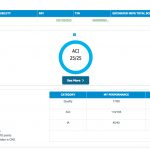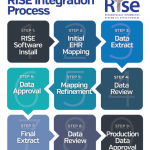As March ends, medical practices across the U.S. are completing their annual Merit-Based Incentive Payment System (MIPS) Quality Payment Program (QPP) measure reports for the Centers for Medicare & Medicaid Services (CMS). After spending the entire year tracking these measures to meet federal requirements, the push of a submission button is all that stands in the way of receiving the score that will determine reimbursement adjustment.
Ann Marslett, a practice manager at Rheumatology Associates of Baltimore in Maryland, recalls the early days of measure submission: “We were participating in PQRS [the Physician Quality Reporting System], which was a manual process. We were still using paper charts and had to abstract all the data. The amount of time I and other staff spent pooling the data and then manually entering it was about 60 hours.”
The Rheumatology Informatics System for Effectiveness (RISE) registry, Ms. Marslett says, has been a game-changer for her seven-provider practice. “It’s so easy; it does everything for you in the background while you work. There is no data extraction that I need to do.”
The RISE registry is a benefit available to all ACR/ARP members. It assists with MIPS reporting, helps improve patient care and fosters discoveries. Aimed at improving the quality of patient care by leveraging the new wave of big data from electronic health records (EHRs), RISE is the first and largest national EHR-enabled rheumatology registry in the U.S. The ACR created RISE to help prepare rheumatologists for the significant challenges of a rapidly changing healthcare environment, including adapting to new payment and delivery models, meeting evolving certification requirements and using EHR data to assess the quality of care.
Nearly 200 EHR systems used by rheumatology practices have successfully been integrated with the RISE registry. Ms. Marslett is one of more than 1,000 providers, representing more than 2 million patients, who participate in RISE. Even though Rheumatology Associates of Baltimore has used RISE since 2014, new capabilities still surprise her, especially when it comes to EHR integration.
“One of the really cool things about RISE is it automatically uploads data from the EHR into incidental measures,” she says. “When it comes time to submit, there are several of these measures that we qualify for, but we would not have even known to track and upload that data. That has really expanded our capabilities. … The RISE staff have really been amazing; they’ve worked with us to validate data and ensure we get credit for our work towards measures.”

